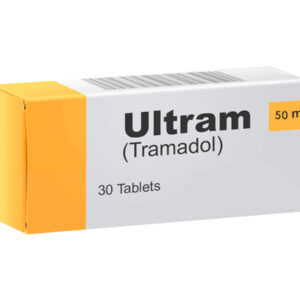Description
What is Dilaudid|Buy Dilaudid online?
Dilaudid (hydromorphone) is a prescription opioid pain medication. It is used to treat moderate to severe pain and is typically used in people who are already receiving opioid pain medication but who need additional pain relief.
Dilaudid works by interacting with opioid receptors in the brain and spinal cord to block the perception of pain. It is usually taken by mouth in the form of a pill or liquid, but it can also be given intravenously or through a spinal injection.
Dilaudid is a powerful medication and should only be used as directed by a healthcare provider. It is important to follow the dosing instructions carefully and to not take more medication than prescribed. Dilaudid can be habit-forming and can cause serious side effects, including respiratory depression, if taken in high doses or in combination with other medications that can also cause respiratory depression.
If you have been prescribed Dilaudid and have questions about the medication, be sure to ask your healthcare provider for more information.
Different forms of Dilaudid.
Dilaudid (hydromorphone) is available in several different forms, including:
- Oral tablets: Dilaudid tablets are taken by mouth and are available in various strengths.
- Oral solution: Dilaudid oral solution is a liquid form of the medication that is taken by mouth. It is available in various strengths.
- Injection: Dilaudid injection is a sterile solution that is given by a healthcare provider through a vein (intravenous injection) or into the spinal canal (intrathecal injection).
- Rectal suppository: Dilaudid rectal suppositories are solid medications that are inserted into the rectum and are used to treat pain in people who cannot take medication by mouth.
- Nasal spray: Dilaudid nasal spray is a liquid form of the medication that is sprayed into the nostrils. It is used to treat pain in people who cannot take medication by mouth.
How to use Dilaudid.
Dilaudid (hydromorphone) is a prescription opioid pain medication that is used to treat moderate to severe pain. It is important to use Dilaudid as directed by a healthcare provider and to follow the dosing instructions carefully.
Here are some general guidelines for taking Dilaudid:
- Take Dilaudid exactly as prescribed: Do not take more Dilaudid than prescribed or take it more often than directed by your healthcare provider.
- Swallow Dilaudid pills whole: Do not crush, chew, or break the pills, as this can release too much of the medication at once and increase the risk of side effects.
- Measure liquid Dilaudid carefully: If you are taking liquid Dilaudid, be sure to use a measuring spoon or cup to measure the correct dose. Do not use a household spoon, as it may not be accurate.
- Take Dilaudid with or without food: Dilaudid can be taken with or without food. If you take Dilaudid on an empty stomach and it upsets your stomach, try taking it with food.
- Do not drink alcohol while taking Dilaudid: Dilaudid can interact with alcohol and increase the risk of serious side effects, such as respiratory depression.
- Do not stop taking Dilaudid suddenly: If you have been taking Dilaudid regularly and stop suddenly, you may experience withdrawal symptoms. It is important to talk to your healthcare provider if you want to stop taking Dilaudid, as they can help you taper off the medication slowly to minimize the risk of withdrawal.
If you have any questions about how to take Dilaudid, ask your healthcare provider for more information.
Dilaudid side effects
Like all medications, Dilaudid (hydromorphone) can cause side effects. Not everyone who takes Dilaudid will experience side effects, and the severity of the side effects can vary from person to person.
Common side effects of Dilaudid may include:
- Drowsiness: Dilaudid can cause drowsiness, which may affect your ability to drive or operate heavy machinery.
- Constipation: Dilaudid can cause constipation, which can be relieved by drinking plenty of fluids and eating a high-fiber diet. Your healthcare provider may also recommend a laxative.
- Nausea and vomiting: Dilaudid can cause nausea and vomiting, which can be relieved by taking the medication with food or by taking an anti-nausea medication.
- Dizziness: Dilaudid can cause dizziness, which can increase the risk of falls, especially in older adults.
- Dry mouth: Dilaudid can cause dry mouth, which can be relieved by drinking plenty of fluids or by using a saliva substitute.
- Rash or hives: Dilaudid can cause a rash or hives, which may be a sign of an allergic reaction. If you develop a rash or hives while taking Dilaudid, contact your healthcare provider.
- Changes in mood: Dilaudid can cause changes in mood, such as feeling anxious or depressed. If you experience changes in mood while taking Dilaudid, talk to your healthcare provider.
This is not a complete list of all the possible side effects of Dilaudid. If you experience any side effects while taking Dilaudid, be sure to tell your healthcare provider.
It is important to use Dilaudid as directed by a healthcare provider and to not take more medication than prescribed. If you have any questions about the side effects of Dilaudid, ask your healthcare provider for more information.
Warnings & Precautions.
It is important to use Dilaudid as directed by a healthcare provider and to follow the dosing instructions carefully, as it can be habit-forming and can cause serious side effects.
Here are some warnings and precautions to consider when taking Dilaudid:
- Risk of respiratory depression: Dilaudid can cause respiratory depression, or slowed breathing, which can be dangerous or even fatal if not treated promptly. Be sure to tell your healthcare provider if you have any problems with your lungs or if you have a history of drug abuse or addiction.
- Risk of addiction: Dilaudid can be habit-forming and can lead to addiction, especially when taken in high doses or for a long period of time. Be sure to take Dilaudid exactly as prescribed by your healthcare provider and to not take more medication than directed.
- Risk of overdose: Taking too much Dilaudid can cause an overdose, which can be a life-threatening emergency. Symptoms of a Dilaudid overdose may include respiratory depression, drowsiness or unconsciousness, slow or stopped heartbeat, and seizures.
- Risk of withdrawal: If you have been taking Dilaudid regularly and stop suddenly, you may experience withdrawal symptoms, such as restlessness, agitation, tremors, severe abdominal cramps, and insomnia. It is important to talk to your healthcare provider if you want to stop taking Dilaudid, as they can help you taper off the medication slowly to minimize the risk of withdrawal.
- Risk of interactions with other medications: Dilaudid can interact with a number of other medications and substances, which can increase the risk of side effects or other serious complications. Be sure to tell your healthcare provider about all the medications you are taking, including prescription medications, over-the-counter medications, vitamins, and herbal supplements, before taking Dilaudid.
If you have any questions about the warnings and precautions of Dilaudid, ask your healthcare provider for more information.
Storage.
It is important to store it properly to ensure that it remains safe and effective. Here are some guidelines for storing Dilaudid:
- Keep Dilaudid in its original container. Do not store it in a pillbox or transfer it to a different container.
- Store Dilaudid at room temperature, away from moisture and heat. Do not store it in the bathroom or near a sink.
- Keep Dilaudid out of reach of children and pets.
- If you need to dispose of Dilaudid, follow the instructions provided by your pharmacist or healthcare provider. Do not flush Dilaudid down the toilet or throw it in the trash.
- If you have any questions about how to store Dilaudid, ask your pharmacist or healthcare provider for more information. They will be able to provide you with specific guidelines for storing the medication safely.
Drug interactions.
Dilaudid (hydromorphone) can interact with other medications and substances, which can affect how Dilaudid works or increase the risk of side effects. It is important to tell your healthcare provider about all the medications you are taking, including prescription and over-the-counter drugs, vitamins, and herbal supplements.
Some medications that can interact with Dilaudid include:
- Other pain medications, such as opioids or nonsteroidal anti-inflammatory drugs (NSAIDs)
- Sedatives or tranquilizers, such as diazepam (Valium) or lorazepam (Ativan)
- Antidepressants, such as selective serotonin reuptake inhibitors (SSRIs) or tricyclic antidepressants (TCAs)
- Antihistamines, such as diphenhydramine (Benadryl) or hydroxyzine (Vistaril)
- Antipsychotics, such as haloperidol (Haldol) or olanzapine (Zyprexa)
- Other medications that affect the central nervous system, such as muscle relaxants or seizure medications
In addition, Dilaudid can interact with alcohol and other substances that can affect the central nervous system, such as illicit drugs. These interactions can increase the risk of serious side effects, such as slowed or shallow breathing, coma, or death.
If you have any questions about potential drug interactions with Dilaudid, talk to your healthcare provider or pharmacist. They can help you understand the risks and how to manage them.
Dilaudid vs fentanyl.
Dilaudid and fentanyl are both powerful opioid pain medications. They are often used to treat severe pain in hospital settings, but they can also be prescribed for pain management in other settings.
Dilaudid (hydromorphone) is a strong opioid pain medication that is used to treat moderate to severe pain. It is similar to other opioids such as morphine and oxycodone, but it is more potent. Dilaudid is available in several forms, including tablets, liquid, and injection.
Fentanyl is an extremely powerful opioid pain medication that is used to treat severe pain, including cancer pain. It is 50-100 times more potent than morphine, and it is available in several forms, including a patch, lollipop, and injection. Fentanyl is often used in people who are tolerant to other opioids, or in people who are experiencing severe pain that is not well-controlled by other medications.
Both dilaudid and fentanyl can be highly addictive and can cause serious side effects, including respiratory depression and overdose. They should only be used under the supervision of a healthcare provider, and they should be used with caution in people who have a history of substance abuse or addiction.
Dilaudid to morphine conversion.
Dilaudid (hydromorphone) and morphine are two opioid pain medications that are used to manage moderate to severe pain. They work in similar ways by binding to opioid receptors in the brain and spinal cord to block pain signals and increase the production of pleasure-inducing chemicals in the body. However, they have different potencies and dosing recommendations, so they cannot be directly converted.
The conversion between the two drugs should be done carefully and under the guidance of a healthcare professional. Factors such as the patient’s age, weight, kidney and liver function, and the severity and type of pain should be considered when determining the appropriate dose of either medication. It is also important to keep in mind that different people may respond differently to these medications and what works for one person may not work for another.
It is important to note that both dilaudid and morphine can be addictive and should be used only as prescribed by a healthcare provider. If you have any questions about the use of these medications, you should speak with your healthcare provider.
Overdose Of Dilaudid.
An overdose of Dilaudid (hydromorphone) can be serious and potentially life-threatening. Symptoms of a Dilaudid overdose may include:
- Slow or shallow breathing
- Bluish tint to the skin or nails
- Cold, clammy skin
- Weak pulse
- Dizziness or fainting
- Confusion or hallucinations
- Loss of consciousness
If you suspect that someone has overdosed on Dilaudid, seek medical attention immediately. Call 911 or your local emergency number, or go to the nearest emergency department.
It is important to store Dilaudid safely and keep it out of reach of children and pets. If you have leftover Dilaudid or no longer need the medication, dispose of it properly. Do not flush it down the toilet or throw it in the trash. Ask your pharmacist or healthcare provider for more information on how to dispose of Dilaudid safely.
If you have any questions about Dilaudid overdose, talk to your healthcare provider or pharmacist. They can provide you with more information and help you understand the risks and how to prevent an overdose.
Dilaudid nursing interventions.
It is important for nurses to be aware of certain nursing interventions when administering Dilaudid to patients. These may include:
- Assessing the patient’s pain level and response to the medication before and after administering Dilaudid.
- Monitoring the patient for side effects, such as dizziness, drowsiness, and nausea, and taking appropriate action if these occur.
- Educating the patient about the proper use of Dilaudid, including the importance of taking the medication exactly as prescribed and not increasing the dosage without consulting a healthcare provider.
- Encouraging the patient to report any problems or concerns about their pain management or the use of Dilaudid.
- Assisting the patient with any activities of daily living that may be affected by the use of Dilaudid, such as bathing or dressing.
- Providing the patient with information about the potential risks and benefits of using Dilaudid, and discussing any questions or concerns they may have.
- Collaborating with the patient’s healthcare team, including the prescribing healthcare provider, to ensure that the patient is receiving appropriate pain management and any necessary support or resources.
Dilaudid withdrawal.
If a person who is physically dependent on Dilaudid stops taking the medication suddenly, they may experience withdrawal symptoms.
Symptoms of Dilaudid withdrawal may include:
- Sweating
- Teary eyes
- Runny nose
- Yawning
- Restlessness
- Muscular aches
- Abdominal cramps
- Nausea and vomiting
- Diarrhea
- Dilated pupils
- Goosebumps
- Anxiety
- Depression
- Insomnia
- Irritability
It is important to note that Dilaudid withdrawal can be very uncomfortable and may be accompanied by severe flu-like symptoms. It is generally recommended that people who are physically dependent on Dilaudid gradually taper off the medication under the supervision of a healthcare provider, rather than stopping it suddenly. This can help to minimize the severity of withdrawal symptoms and make the process of detoxification more manageable.










Reviews
There are no reviews yet.